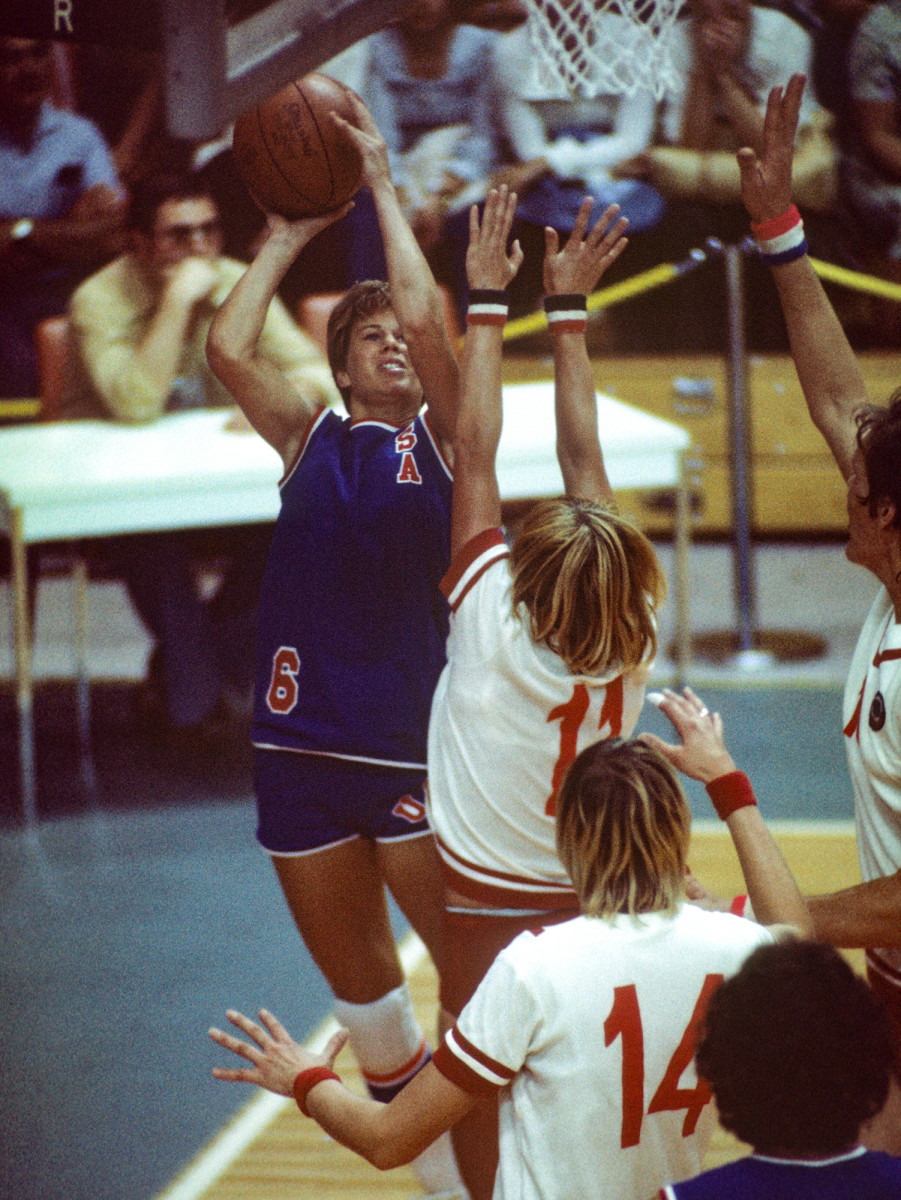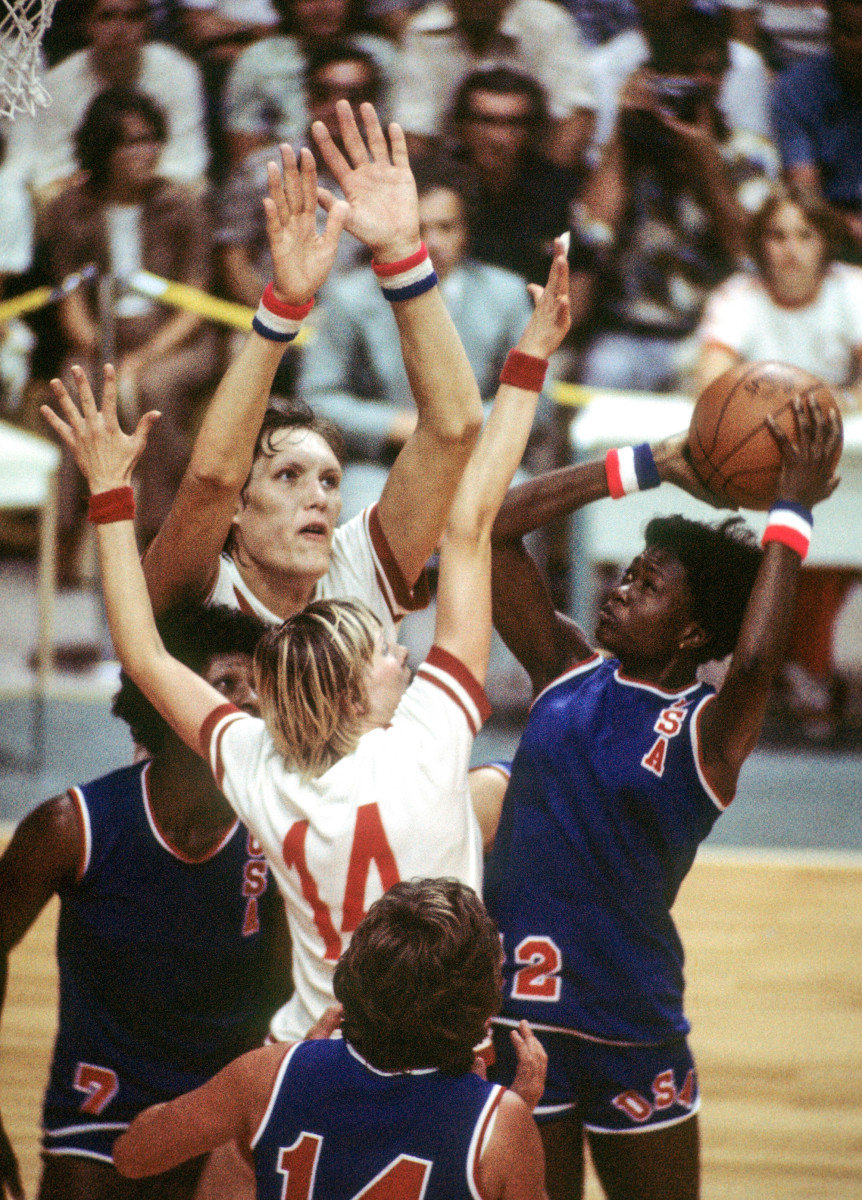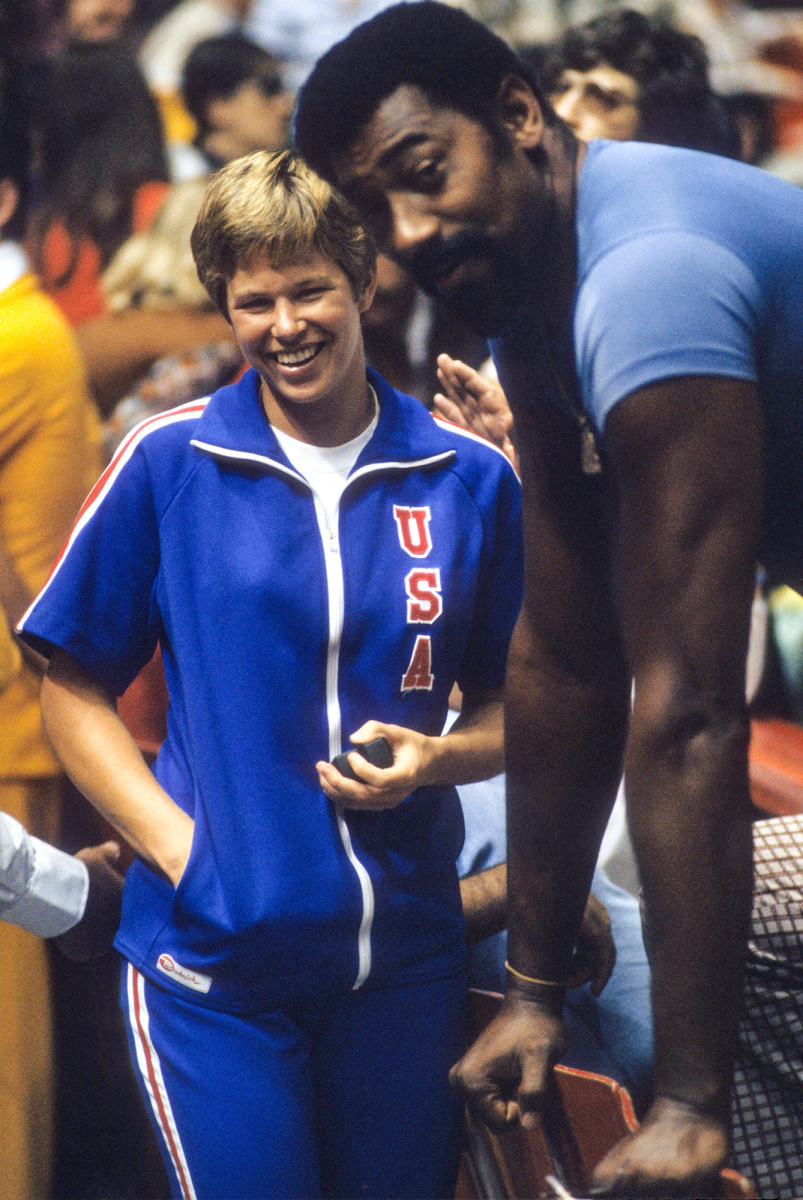The 1976 U.S. Olympic Women’s Basketball Team Forever Changed Sports

Coach Billie Moore sat her basketball team down before its 1976 silver medal match against Czechoslovakia at the Montreal Summer Games. The squad had endured a long and winding journey to get to this point, now on the precipice of history. Moore delivered an important and prescient message to her players: win this game and they would forever shift the trajectory of women’s sports in the United States. Forty-seven years later, that silver-medal-winning team is being recognized for doing just that, as the first women’s basketball team to represent the U.S. at the Olympics.
Captained by Juliene Brazinski Simpson and the late Pat Head Summitt, the team is among the honorees that will descend upon Springfield, Mass., this weekend to celebrate the enshrinement of the class of 2023 into the Naismith Memorial Basketball Hall of Fame. Inductees include household names like Dwyane Wade, Tony Parker and Becky Hammon, among others. While perhaps the 1976 squad, on the whole, is less recognizable in popular culture than its Naismith compatriots, the group is more than deserving of the Hall of Fame limelight.

“You could argue this is the most important USA basketball team, men or women, in history. That it had a transcendent impact not just on women’s basketball, but really women’s team sports in the United States,” says Andrew Maraniss, who wrote the book Inaugural Ballers: The True Story of the First U.S. Women’s Olympic Basketball Team.
The team’s success came at a critical time, just four years after the passage of Title IX and amid the women’s liberation movement. It’s impossible to extricate the 1976 team’s story from the gender politics of the era, and for the players, their tale is really about the relay race that is women’s basketball (and women’s sports, for that matter). The ’76 group ran a critical leg in the race, receiving the baton from those that came before them and passing it on to the next generation.
“[The earlier generation] did not have that same opportunity to play in the Olympics,” says Simpson. “They paved the way for us, so we are on the shoulders of all the people who played before us to get the honor to be on the first Olympic team.”
Nearly half a century after the fact, Simpson, Ann Meyers, Mary Anne O’Connor, Gail Marquis, Nancy Lieberman, Trish Roberts, Nancy Dunkle, Sue Rojcewicz and Cindy Brogdon—along with those who have since passed: Moore, Summitt, Lusia “Lucy” Harris, Charlotte Lewis and assistant coach Sue Gunter—will be formally recognized for their boundary-breaking triumph.

How do you dream for something, when it’s not even there in front of you?
Being the first comes with the ability to visualize what is yet to exist—a power that requires inconceivable belief and audacity, which this group harnessed in droves. Raised in a pre–Title IX, pre-professionalized, pre–Olympic team world, many of the 1976 players had to blaze their own trails as aspiring young athletes.
“They really represented the end of an era in a way. They grew up at a time where they were told that they shouldn’t even be interested in sports,” says Maraniss. “They represented the best of what was possible in an era when everything was stacked against them.”
O’Connor points to her time at Southern Connecticut State, with the frustration still palpable in her voice years later. The women’s team was much better than the men’s, finishing third place in the AIAW Division I basketball championship in 1973 and ’74. Still, the women’s squad was forced to cede court time to its male counterparts. “We had to practice around [the men’s team] practices, later at night, not the prime time,” says O’Connor, “so it was just terrible.”
Meyers, the first woman to receive a full athletic scholarship to UCLA, is one of 11 children, with much of her family impressive athletes in their own right. She cites her sister Patty, who won a championship at Cal State Fullerton under coach Moore in 1970, as her inspiration, providing her a blueprint in a world without much in the way of representation. Still, Meyers’s parents had to intervene early on to ensure their daughter Ann, (unbeknownst to her at the time) even had a team to play on.
“In fifth and sixth grade, they had to go through the school district and the principal and stuff to allow me to play on the boys after-school sports program,” says Meyers. “They had basketball, but they didn’t have it for girls. They only had it for boys. So my parents fought to get me to play.”
That didn’t deter Meyers from dreaming big, though, with the budding athlete actually believing she’d one day compete at the Games in track and field.
But how?
“How do you dream for something, when it’s not even there in front of you?” asks Marquis, the first woman of color inducted into the New York City Basketball Hall of Fame in 2009. Her answer, much like Meyers and her other teammates, was simple: “I just kind of kept dreaming.”
“I might have dreamt that I was going to be the first woman drafted to the New York Knickerbockers,” says Marquis. Simpson similarly thought maybe she’d be the first woman to compete in the NBA. (Harris was drafted by the New Orleans Jazz in 1977, and Meyers became the first woman to receive an NBA tryout, signing a $50,000 contract with the Indiana Pacers in ’79.) “We couldn’t see ourselves in anything we saw on TV. … Women were not on TV at all for basketball or any team sports, really, for that matter,” says O’Connor, with professional men’s teams the only visible goal to strive for at the time.

Eventually, though, all the hope and belief that these young players conjured up manifested into a real opportunity to represent their country at the Olympics. As the popularity of women’s basketball continued to grow globally, the IOC finally added the event to the Olympics in 1976, 40 years after men’s basketball. “When the time came, I was just driven,” says Marquis. She remembers the team tryouts well, as Marquis didn’t make the ’75 PanAm team and carried a chip on her shoulder because of it. The Friday night that the would-be Olympic roster was posted, she says she was packing her bags, knowing she hadn’t made the squad after what she deemed a poor showing. Then Lieberman burst into her room, telling her she’d made the team.
It was then that the real work began, with the U.S. needing a result at the qualifying tournament to book their tickets to Canada for the Olympics. The prevailing narrative at the time was that the U.S. wouldn’t make it to the Summer Games, and if it did manage to qualify, it likely wouldn’t make much of a splash, let alone reach the podium. Much to the surprise of many, the United States won qualifying. It was so much of a shock that USA Basketball had nowhere for the team to go, with Moore telling her players decades after the fact, that then executive director Bill Wall gave her his personal credit card and told her to find arrangements for the soon-to-be Olympians to train. It’s a story that sticks with many of the players, some incredulous, others unsurprised by the revelation, but all of them attribute this type of setback to developing the squad’s take-nothing-for-granted ethos.
“They didn’t have any money for us,” says Meyers. “They didn’t have any money for the women’s team because it was all put into the men’s team.” Moore managed to secure the University of Rochester as her team’s training home base in the lead-up to Montreal. Practices were grueling, with the players and coaching staff knowing what they were up against. The Soviets, led by 7'0" Uljana Semjonova, loomed large—they were virtually unbeatable and almost guaranteed to take home gold. Everything else, though, including the silver medal, was up for grabs. It was the same belief that propelled the players as young athletes that carried them through the Olympics, now on the biggest stage of their careers. “You better believe or go home. If you don’t believe, cut your losses, and give that spot to one of the alternates. You believe until they hang the medal on somebody else’s neck,” says Marquis.
That marquee U.S. conviction was tested in an opening loss to Japan—the matchup was played at 9 a.m. local time. “We were practicing by getting up at like 3 o’clock in the morning,” says O’Connor. “You can imagine how that went over.” But it was the wake-up call, quite literally, that Moore’s group needed, with the United States falling to only the Soviet Union after its opening fumble. Finding its way to the silver medal game against Czechoslovakia, the once unthinkable was now within reach. Moore, knowing the gravity of the moment, had a powerful message to share with her group ahead of their Olympic finale: “If you win this game, it will change women’s sports in the country for the next 20 years,” Simpson remembers Moore saying. And win the silver they did, shocking those who dared to doubt them. “It was a dream come true and it was almost like an out-of-body experience,” says O’Connor, reminiscing on her time on the podium, the silver medal being draped around her teammates’ necks.
The team didn’t lose gold; it’s the players’ firm belief they won silver. The U.S.’s success in many ways was thanks to the compelling performance of players like Harris, who led the team in scoring and rebounds, with 15.2 points and seven rebounds per game. She also holds the unique distinction of being the first woman to score in the Olympics and the first Black woman inducted into the Hall of Fame, receiving the honor in 1992.
Beyond any individual achievement, the 1976 team also crucially knew how to come together for the greater good. “We had a very unique chemistry,” says Simpson. “The chemistry, the camaraderie, the love of each other, and the care that we had … it was just this attitude, we were on a mission and we were not going to doubt ourselves.” Their alchemy is even more impressive considering this wasn’t the USA Basketball team of today, where players compete together for years, if not decades, before a major tournament. Sure, maybe they played with or against one another in college, but for the most part, these athletes gathered from across the country with little familiarity. “We all came from different walks of life,” says Meyers, “and we became sisters.”
After the Olympics, the players carried on paving their own paths, boosted by their historic feat, with Lieberman and Meyers going on to have prolific collegiate careers and Summitt building a dynasty at Tennessee as one of the best basketball coaches in history, while others found success playing overseas. But the 1976 team won’t be remembered just for its stars or simply for its silver medal, it will be remembered for shifting the trajectory of women’s sports in the United States.
“We did it for the advancement of girls’ and women’s sports,” says Marquis. “And know our names, know our stories.”
Being recognized by an institution like the Hall of Fame will only help in that endeavor, and the players of the 1976 squad know it. The team doesn’t take the enshrinement lightly. Acknowledgment at the highest level can be rare for women’s athletes of that era, especially during their lifetimes, with many of the players and coaches from the Olympic team having since died—imbuing the induction with a unique emotional weight. Saturday’s pomp and circumstance has certainly been seen before, but perhaps never has an induction meant more to its recipients, to the women that came before them, and to the basketball players that have, and will continue to, come after them. While the progress of women’s basketball in America has been far from linear, it’s hard to imagine the WNBA, which was founded in ’96 and is now in its 27th season, existing without the likes of the ’76ers.
“There were women that played before us that never got any recognition,” says O’Connor. “So I always feel like we were standing on their shoulders, and then subsequent generations are standing on our shoulders, and we have been building it up like that slowly but surely.”
